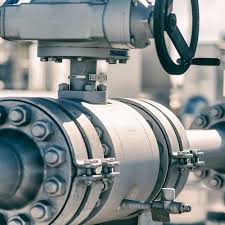
It has the following types which are given below:
- One Piece On-off Ball Valve
- Two-Pieces On-off Ball Valve
- Three-Pieces On-off Ball Valve
- Pneumatic On-off Ball Valve
- PTFE Liner On-off Ball Valve
- Manual On-off Ball Valve
- High-Pressure On-off Ball Valve
- Electric On-off Ball Valve
- Stainless Steel On-off Ball Valve
1. One Piece On-off Ball Valve
The ball is installed from one end of the valve, and the valve seat and ball are fixed and compressed with a threaded sleeve. This off-ball valve has a simple structure, and minor components, and is easy to manufacture and install. It is suitable for small diameters, especially for viscous or crystallizing media, such as urea, where the valve body must become a thermal insulation jacket.
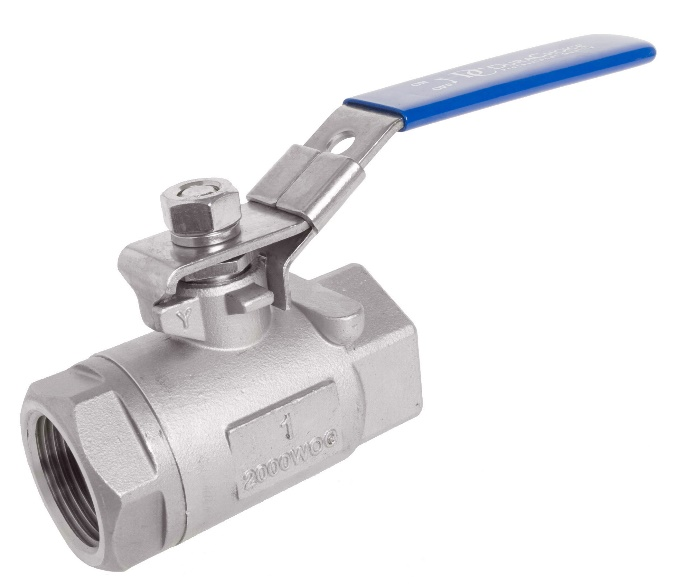
Features
The standard valve in one piece, body, and flanges, ensures the least leakage possible. The valve meets ANSI B16.5 for flange dimensions and ANSI B16.10 for face-to-face dimensions. In the standard design, the raised faces of the flanges are grooved per ANSI B16.11. The body includes a cover with an integrated plate according to ISO 5211 for easy automation.
To facilitate assembly and maintenance, the valve is designed with a flange opening on one side, allowing the positioning of each internal part, then closed by a plug, tapped with precision to allow this repetition. The result is an optimal closure with adapted tightening torque and a perfect seal.
It is possible to modify the ANSI standard connection flange by drilling according to EN1092 PN16 and PN40. In addition, it is also possible to replace the flange side with a weld end.
A double jacket on the one-piece valve is the most practical solution for applications where valve heating is required to maintain flow fluid temperature.
2.Two-Pieces On-off Ball Valve
The standard two-piece valve supports large flows thanks to its design with a resistant body and connecting flanges. Our two-piece valves meet ANSI B16.10 for face-to-face dimensioning and ANSI B16.5 class 150 and ANSI class 300 for flange sizing. They are also available as standard according to EN1092 PN16 and PN40. In the standard design, the raised faces of the flanges are grooved per ANSI B16.11. The body includes a cover with an integrated plate according to ISO 5211 for easy automation.
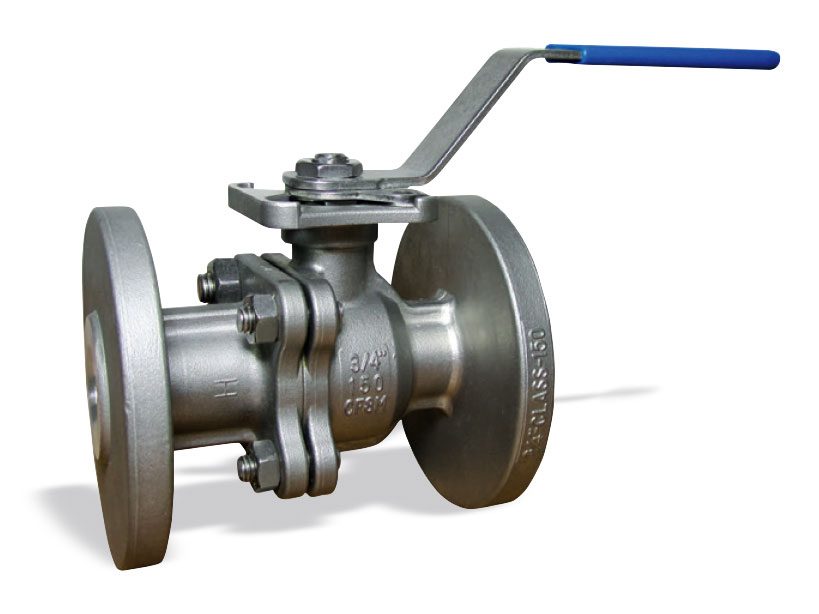
The valve is designed to separate the body in two, facilitating access to internal parts for maintenance and assembly with standard tools.
The result is an optimal closure with adapted tightening torque and perfect sealing, thanks to the tightening bolts which are fixed between the connection part to the body.
3.Three-Pieces On-off Ball Valve
The 3-piece forged, cast, or machined-in-bar valve includes a body (the center section) and a variety of connections (threaded, weld-on, flanged) to facilitate a wide range of possible configurations. Removing the center section allows the connections to be the fixed parts on the piping while the valve itself is easily serviced by removing it from the assembly.
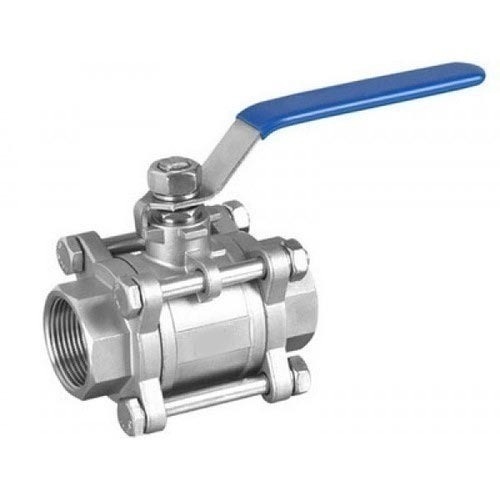
4.Pneumatic On-off Ball Valve
This ball valve with a pneumatic actuator may be the best on/off ball valve available. The pneumatically actuated ball valve is cost-effective, practical, and low maintenance due to its large circulation capacity, compact design, strong sealing performance, and long service life.
The on-off Ball Valve with Pneumatic Actuator is widely used in the oil, chemical, gas, electrical power, metallurgy, food, and pharmaceutical industries as well as other applications where severe requirements are required.
Along with other media, it is also used for water, steam, oil, liquefied gas, gas, and gas. In addition, clients’ demands might be taken into consideration while choosing a fire-resistant and unique hardening treatment.
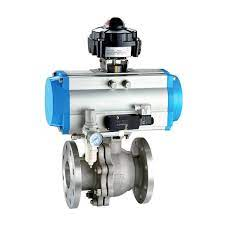
5.PTFE Liner On-off Ball Valve
PTFE is commonly known as “Plastic King”. It was first developed by DUPONT CO., LTD in the United States in 1938 and industrialized in 1949. It has a history of 50 years from the perspective of industrial application, and it is really widely used in valves. Not long in the industry.
The fluorine-lined valve adopts the lining process for all the places where the medium in the valve body can reach. Aqua regia and various organic acids, strong acids, strong oxidants, and other corrosive media pipelines, but the fluorine-lined valve is relatively limited by temperature (only suitable for media between -50°C and 150°C) and can be used to make internal.
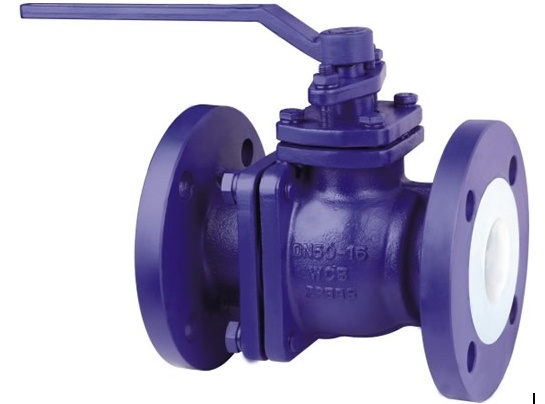
The valves lined with fluorine plastics include a fluorine-lined butterfly valve, fluorine-lined ball valve, fluorine-lined globe valve, fluorine-lined diaphragm valve, fluorine-lined gate valve, fluorine-lined plug valve, etc.
Features
One of the lightest plastics, its yield, tensile and compressive strengths, and hardness are better than low-pressure polyethylene, with outstanding rigidity, good heat resistance, easy molding, and low cost. After modification, it has dynamic impact, fluidity, and bending elasticity.
6.Manual On-off Ball Valve
The only distinction between the manual on-off ball valve, three-piece ball valve, and gate valve is that the closing component of the manual on-off ball valve is a sphere, and the sphere spins around the center line of the valve body to achieve opening and shutting. On-off ball valves are primarily employed to distribute, stop, and reverse the flow of a medium in a pipeline.
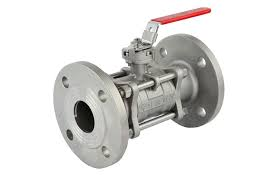
Three-piece ball valves are a brand-new kind of valve that has gained popularity recently in the pipeline, this kind of valve should typically be put horizontally. In the 1950s, a new type of valve called the manual on-off ball valve was introduced.
The ball valve has evolved into a significant valve type during the past 50 years. The ball valve may be used to regulate and control the flow of fluid in addition to being used to connect or disconnect the medium.
V-ball valves allow for relatively precise flow regulation and control, while three-way ball valves are used to distribute media and change the direction of flow of media. The manual ball valves are primarily named after the way in which the ball valve is actuated by the rotation of a handwheel or handle
Advantage
The manual ball valve gets its name mostly from the handwheel or handles that is used to turn the ball valve. Advantage A very new sort of ball valve is the manual on the off-ball valve. There is no friction on the switch, the seal doesn’t easily wear out, and there is a modest opening and closing torque, which are all benefits specific to its own structure.
As a result, the installed actuator is smaller. It can achieve the adjustment and stringent shut-off of the medium thanks to the multi-turn electric actuator it is equipped with.
It is widely used in petroleum, chemical industry, urban water supply, drainage, and other working conditions that require strict cut-offs.
The manual ball valve is primarily utilized to distribute, stop, and reverse the flow of the medium in a pipeline. The on-off ball valve is a new type of valve that has been widely used in recent years. It has the following advantages:
- The fluid resistance is low, and its coefficient of resistance is the same as that of the identical-length pipe segment. 2. A straightforward design that is compact and lightweight. 3. It is secure and dependable. Currently, plastic, which has an excellent sealing performance and is extensively utilized in vacuum systems, is the material used for the ball valve’s sealing surface. 4. Simple to use, quick to open and close, and useful for long-distance control because it only requires a 90° rotation from completely open to fully closed.
- The ball valve is easy to maintain, has a basic structure, a usually moving sealing ring, and is easier to remove and replace.
- The sealing surfaces of the ball and the valve seat are separated from the medium whether the valve is fully open or fully closed, and the sealing surface of the valve will not erode when the medium passes through.
- It has a wide range of applications, with diameters ranging from small to several millimeters, large to several meters, and can be applied from high vacuum to high pressure.
7.High-Pressure On-off Ball Valve
A high-pressure on-off-ball valve refers to a valve whose opening and closing member (ball) is driven by the valve stem and rotates around the axis of the valve stem. used in natural gas, hydraulic switches, and other machinery and equipment.
In just 40 years, it has advanced significantly due to the quick advancement of science and technology, ongoing improvements in manufacturing technology, and rapid changes in the product structure. Developed into a major valve class.
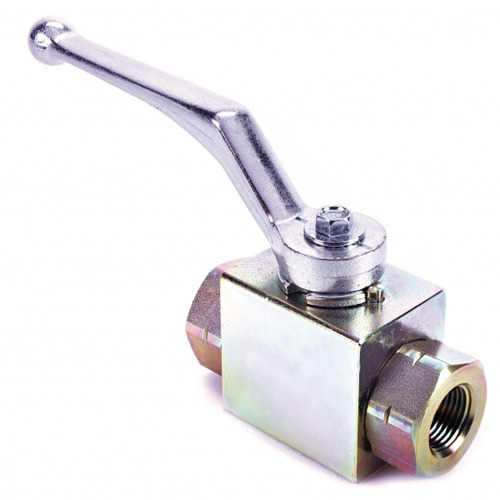
With the rapid development of science and technology, and the continuous improvement of production technology and product structure, it has rapidly developed into a major valve type in just 40 years.
In industrialized countries in western countries, the use of high-pressure ball valves is increasing year by year. In my country, ball valves are widely used in petroleum refining, long-distance pipelines, chemicals, papermaking, pharmaceuticals, water conservancy, electric power, municipal, steel, and other industries that have a key place in the economy of the country. It may also be used to regulate and control the fluid.
It is mostly used to shut off or connect the medium in the pipeline. Particularly suited for media containing fibers and minute solid particles is shearing force.
The multi-port ball valve on the pipeline may seal any channel in addition to flexibly controlling the confluence, diversion, and switching of the flow direction of the medium and connecting the other two channels. This kind of valve should be generally mounted in the pipeline horizontally.
working principle
The on-off high-pressure ball valve rotates 90 degrees and has a sphere-shaped cock body with a circular hole or channel running through its center. The ball valve’s primary functions include distributing the medium in the pipeline and altering the flow direction.
It merely has to be turned 90 degrees in order to be firmly closed. The ball valve is most suited for use as a switch and shut-off valve, but recent developments have enabled designers to create new shapes for the ball valve that allow for flow throttling and control.
Features
The high-pressure ball valve’s small design, dependable sealing, straightforward construction, and simple maintenance are its key characteristics. Oxygen, hydrogen peroxide, methane, ethylene, and other working mediums that are likewise appropriate for hard working conditions are widely utilized in a variety of sectors. The body of the ball valve can be separate or integrated.
8.Electric On-off Ball Valve
The electric ball valve (English name: Electronic Ball Valve) consists of an electric actuator and a ball valve to form an electric ball valve. It is a kind of pipeline pressure element for industrial automation process control, which is usually used for remote on and off (on and off medium) control of pipeline media.
It may also be used to regulate and control the fluid. It is mostly used to shut off or connect the medium in the pipeline. One of the hard-sealed V-ball valves has a strong shear force between the V-ball core and the carbide welded metal seat. It is especially suitable for media containing fibers and tiny solid particles.
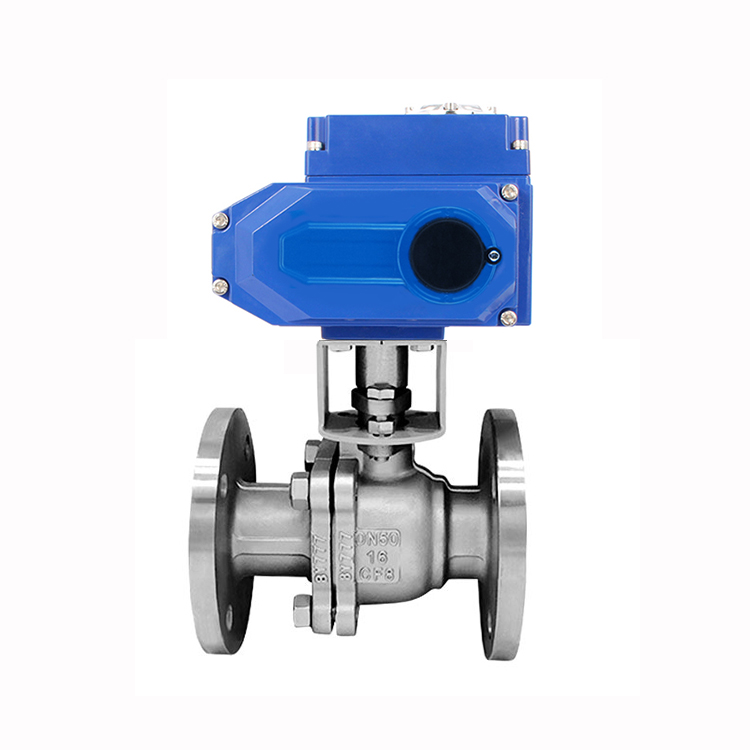
The electric on-off-ball valve is divided into an electric flange ball valve, electric wafer ball valve, electric welding ball valve, and electric screw ball valve. According to the sealing form, it is also divided into soft-sealed electric ball valve and hard-sealed electric ball valve.
9.Stainless Steel On-off Ball Valve
With just a 90-degree turn and a little torque, the stainless-steel ball valve may be firmly closed. The valve body’s entirely equal body cavity offers the medium a low-resistance, straight-through flow channel.
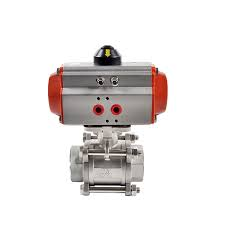
Features
Its main features are compact structure and easy operation and maintenance. And the stainless steel ball valve can be used to control the flow of all kinds of fluids, like air, water, steam, various corrosive media, slurry, oil, liquid metal and radioactive media.






